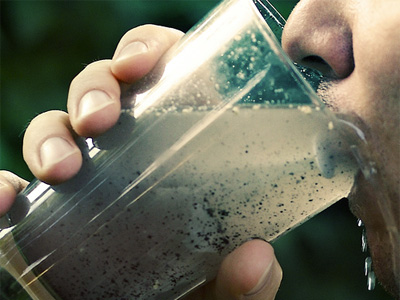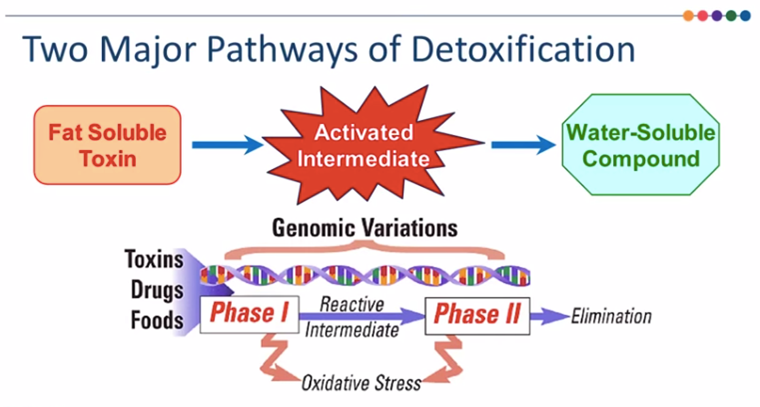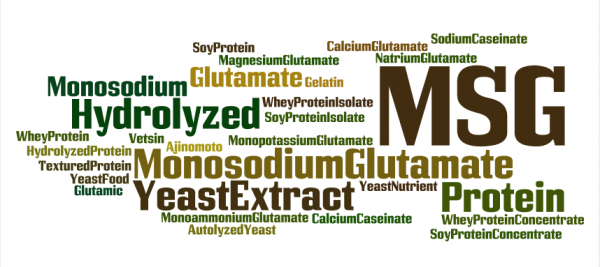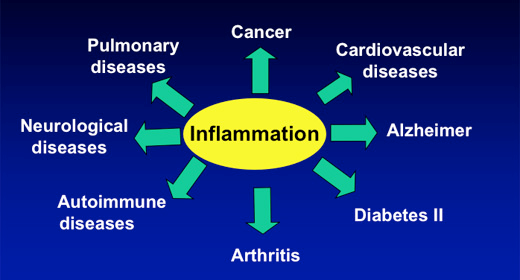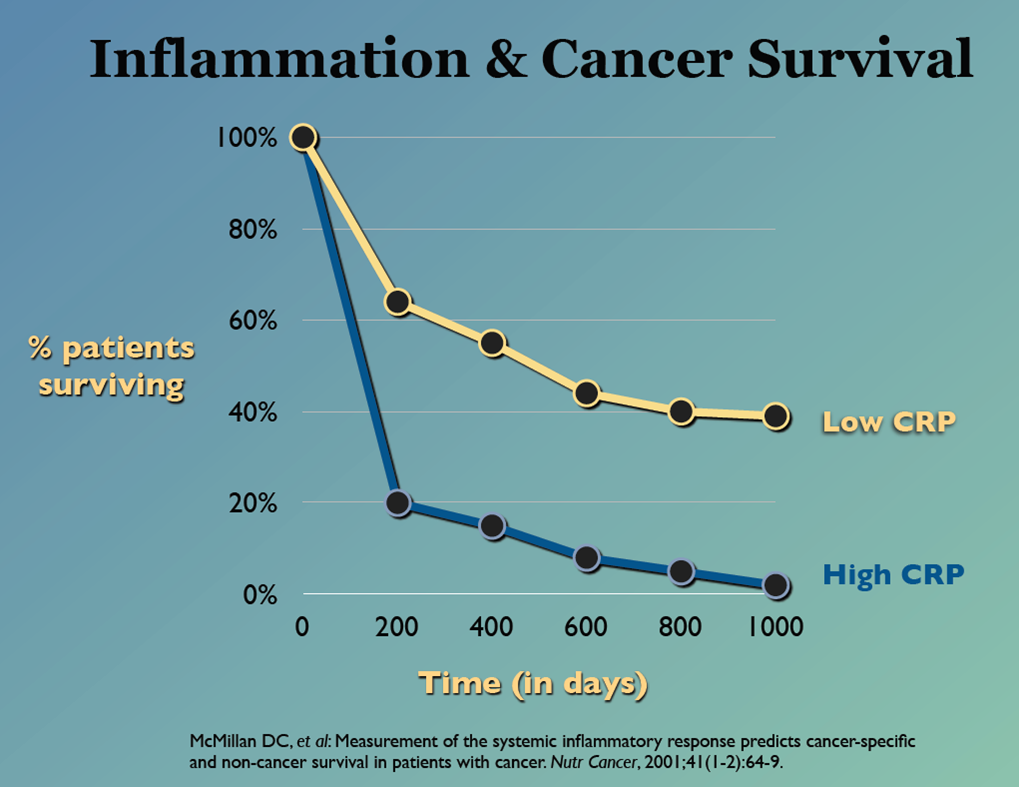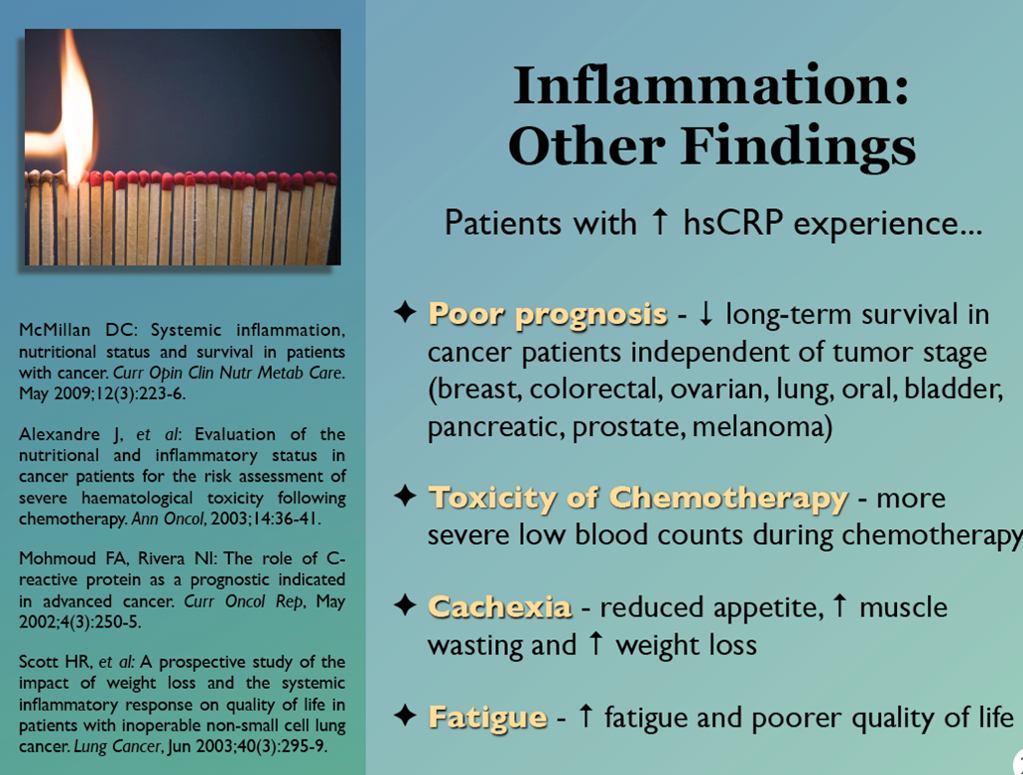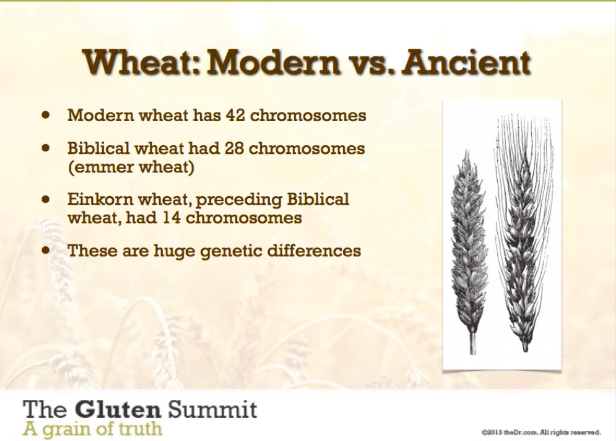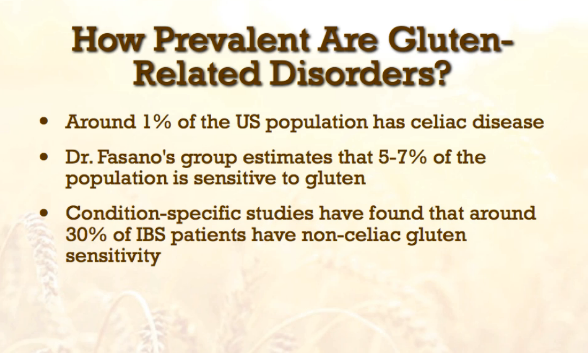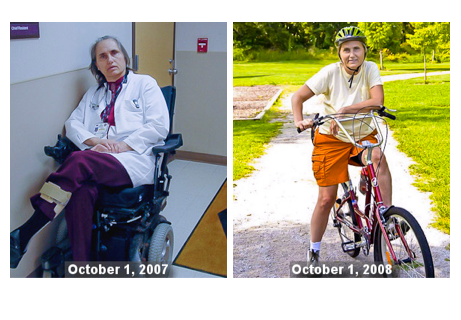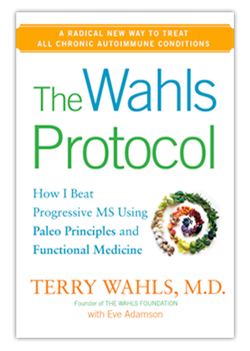Lecture by Mark Pettus transcribed by Carolann Patterson
ENVIRONMENTAL TOXINS: How do they get inside of us; what do they do to us; and how can we undo the damage they cause?
Learning objectives for this lecture will be to
i. Review some common sources of environmental toxins that pervade daily living.
ii. Examine how the growing burden of environmental toxic exposure affects health and quality of life.
iii. Examine lifestyle, behavioral, and supplement strategies that can reduce our toxic burden and optimize our capacity for detoxification.
The Precautionary Principle
“We as physicians must act on facts…and on the most accurate interpretation of them, using the best scientific information. That does not mean that we must sit back until we have 100% evidence about everything. When the state of the health of the people is at stake…we should be prepared to take action to diminish those risks even when the scientific knowledge is not conclusive” Horton. Lancet. 1998;352(9124):251
America does not apply The Precautionary Principle as do other parts of the world - especially in Europe and Canada. In America, THOUSANDS of chemicals are permitted to be used in food and countless other products until proven 100% unsafe and dangerous. Other countries approach it from the opposite angle: when a chemical is proven 100% safe it is then permitted to be used. If it happens that it is already in the system and considered to be unsafe it is more readily removed than would be the case in the US.
Exposure to environmental toxins
Since WWII, more than 85,000 new synthetic chemicals have been released into the environment. As a species we are exposed to 6 million lbs mercury and 2.5 billion lbs of other toxic chemicals each year. Most have not been tested for potential toxicity in adults [few in children]. Over 4 billion lbs of pesticides are used annually in the US. Current law allows 350 pesticides to be used on the foods we eat. The average home contains 3-10 gallons of hazardous materials. Traces > 280 synthetic chemicals can be found in the average newborn.
Our Toxic Load is being passed on
The Environmental Working Group commissioned five laboratories in the U.S., Canada, and Europe to analyze umbilical cord blood collected from 10 minority infants born in 2007 and 2008. Collectively, the laboratories identified up to 232 industrial compounds and pollutants in these babies, finding complex mixtures of compounds in each infant. This research was the first ever to detect BPA in US cord blood as found in 9 out of 10 cord blood samples. Environmental Working Group [EWG.org] -Neonatal Toxicity Study.
The research demonstrates that industrial chemicals cross the placenta in large numbers to contaminate a baby before the moment of birth. Of 10 babies born in US hospitals, 287 chemical compounds are identified in their cord blood, with an average of 200 chemicals per infant. In total, the nine EWG subjects with chemical traces in the cord blood carried:
- 76 chemicals linked to cancer in humans or animals [average 53]
- 94 chemicals that are toxic to the brain and nervous system [average 62] – nb: a more sensitive part of the body, Parkinson’s, Alzheimer’s
- 86 chemicals that interfere with the hormone system [average 58] – nb: endocrine disruptors, puberty is now 2 years earlier, PCOS poly-cystic-ovarian-syndrome is an epidemic in, infertility is close to epidemic, sperm counts are down and 1:8 women develop breast cancer]
- 79 chemicals associated with birth defects or abnormal development [average 55] – nb: associated with Autism
- 77 chemicals toxic to the reproductive system [average 55]
- 77 chemicals toxic to the immune system [average 53] nb: autoimmunity epidemic linked to toxic exposure 40-50 million adults with thyroid disease, rheumatoid arthritis, psoriasis, MS.
Pesticide Levels in Children
Some foods have more “residue” from pesticides. Switching your Dirty Dozen to 100% organic will yield 90% reduction in pesticide residue levels in urine.
What are the Main targets of chemical toxins? Chemical compounds clearly affect the:
- immune system [allergies/asthma, chronic infections, auti-immunity]
- Nervous system
- Endocrine-hormonal system
- Generational [coding and programming that is passed on to children who are born with their systems on alert and “switched on“].
The Effects of Toxins
- Fatigue
- Muscle aches / joint pain
- Brain fog
- Headaches
- Sinus congestion and allergies
- Digestive problems
- Skin problems
- PMS and hormone imbalances
- Weight gain
Plausible evidence links toxic exposure with risk of:
- Immune: Autoimmune diseases, allergies, asthma, chronic dermatitis, and multiple chemical sensitivities [MCS]
- Mitochondrial and Metabolic: Chronic fatigue, fibromyalgia, PD, autism spectrum, obesity, insulin resistance
- Endocrine and reproductive disorders: weight gain, PMS, PCOS, Infertility, Endometriosis, Fibroids
- Digestive disorders: IBS, nausea and vomiting
- Neurological disorders e.g. Parkinson’s, ALS, Alzheimer’s disease, autism spectrum, and multiple sclerosis
- Behavioral health disorders e.g. depression, anxiety, attention deficit and hyperactivity
- Diabetes and cardiovascular diseases
Mitochondria are our “powerhouses.” There are 53 trillion contained in every cell. They have their own DNA - their own “book of life” - and can run themselves. We get our mitochondrial DNA from our mothers. Mitochondria from the father are loaded in the tail of the sperm and exclusively designed for one thing: to be the first to get to the egg. Once there, the tail falls off and all mitochondria then come from the mother.
Sick mitochondria are driving many complex diseases:
- Parkinson’s, Autism, ALS, MS, Dementia
- Fibromyalgia
- Chronic fatigue
- Complex pain syndromes
- Congestive heart failure
- Pre-diabetes/diabetes
There are many things that can be done to restore mitochondria health by following the same protocol as Anti-Inflammatory diet and lifestyle. To learn more, link here to The Health Edge podcast on mitochondria.
Chemicals Cause Damage:
- Mitochondrial toxicity – reduced function of the mitochondria and reduced function in cells/organs that contain mitochondria
- Oxidative damage [ATP ‘our energy.” Fats are more efficient than carbs for energy production. They improve metabolism and decrease oxidative damage]
- Neurotoxicity – solvents diminish neural functioning and Pesticides are neurotoxins by design
Some people retain more toxins than others for the following reasons:
- Genetic differences in Phase One and Phase Two enzymes [polymorphism] nb- this is less about a “bad” gene and more about “typos” in the genes that we are given at birth
- Nutrient deficiencies [in Mg – Magnesium; Se - Selenium, and Vitamin B6] prevent detoxification. Many of us are also deficient in Vitamins A, E, and K all of which are powerful antioxidants that aid detoxification.
- High sugar/Low protein diets
- Stress, emotional stuffing, trauma – allostatic overload impairs one’s ability to detoxify
- Heavy metal presence [esp Hg – Mercury]
- Increased exposure to toxins
We enter the world with genetic pre-dispositions towards certain conditions, but that does not mean you will get it
We enter the world with genetic pre-dispositions towards certain conditions, but that does not mean you will get it.
Inheriting “typos” can lead to poor detoxification.
Glutathione S-Transferase pi-1 is responsible for Phase II detoxification of xenobiotics*, carcinogens, steroids, heavy metals, and products of oxidative stress. GSTP1 is located primarily in the brain and lungs.
GSTP1 polymorphisms are associated with either higher or lower enzyme activity, depending on specific environmental exposures. There is an increased risk of toxic burden, oxidative stress and various cancers especially if “GSTM1 Absent” or exposed to cigarette smoke. *Xenobiotic: a foreign chemical substance found within an organism that is not naturally produced by or expected to be present within that organism; substances which are present in much higher concentrations than are usual.
Treatment options to Boost GST activity:
- Eat cruciferous vegetables [broccoli, bok choy] and alliums [garlic] to increase GST activity and reduce cancer risk
- Eat a diet rich in antioxidants [colorful foods] and consider supplementation
- Ensure availability of GSH cofactors [methionine-rich foods, NAC, L-glutamine, glycine, Mg, B6
- Limit Glutathione depletion with alpha lipoic acid, milk thistle and taurine
- Minimize exposure to xenobiotics, including polycyclic aromatic hydrocarbons and toxic metals
Pharmaceuticals are in our Drinking Water
At least one pharmaceutical was detected in tests of finished drinking water supplies for 24 metropolitan areas, according to an Associated Press survey of 62 major water providers. Only 28 tested finished drinking water. Tests results vary widely. Some water systems said tests had been negative, but the AP found independent research showing otherwise.
Phthalates are in the Products we use...and in our Urine...
Phthalates are used in many common products easily released into the environment. Exposure is airborne, from food and from direct contact. They disrupt endocrine function [EWG's list of endocrine disrupters] and are associated with cancer e.g., breast
Environmental Toxins are prevalent in many products:
- Persistent Organic Pollutants “POPS” : e.g. PCBs, dioxin, DDT, organochlorine pesticides, petrochemical fertilizers, herbicides
- Perfluorooctanoic acid “PFOA”: water repellant in Scotch Guard, Gortex, carpeting, upholstery and PTFE in Teflon
- Polybrominated compounds PBDEs : flame retardants in TVs, computers, etc. “21st century PCBs”
- PCBs : in meat, fish, dairy
- Bisphenol A “BPA”: polycarbinated plastics, canned foods, cash register receipts
- Atrazine agricultural pesticide and herbicide seeps into drinking water
Toxic Chemicals are in Beauty Products:
The average woman uses 12 products daily, containing 168 unique ingredients. The average man uses 6 products daily, containing 85 unique ingredients. Get to know what you are putting ON your body, not just IN your body:
- Phthalates and Parabens: found in hair and skin care products
- Fragrance: found in shampoos, deodorants, skin and body care
- DiethanolamineI: DEA
- Triethanolamine: TEA - found in many cosmetics
- Diazolidinyl Urea, Imidazolidinyl Urea, and Quarternium-15: found in skin and hair products…all release formaldehyde and are linked to sensitivities
- Sodium Lauryl Sulfate: [SLS]
- Sodium Laureth Sulfate: [SLES] found in makeup, shampoos, conditioners and toothpaste. When combined with DEA and TEA they form nitrosamines which are carcinogenic
- Triclosan: a synthetic antibacterial in skin cleaners and household products is a hormone disrupter. The EWG Dirty Dozen Endocrine Disrupters are listed here
A useful site for to help you get to know the cosmetics you use:
- Cosmetic Safety Database www.cosmeticdatabase.com
Explore switching to natural cosmetic products:
MERCURY is found in Fish
Mercury is environmentally ubiquitous with levels 30x higher last 2 generations. It enters the air and rain from coal and oil-fired power plants, incinerators, waste and manufacturing plants that use mercury to produce chlorine-containing plastics, PVC piping, pesticides, etc. It enters water and soil from natural deposits, volcanic activity, mining ore, and disposal of wastes e.g. batteries. Methyl mercury is formed in soil and water by algae and bacteria that is then ingested by fish. It is also found in fungicides. Elemental mercury and amalgams used in dental fillings, batteries, electrodes, barometers, fluorescent light bulbs, red tattoo dye, skin-lightening creams and thermostats. Federal Toxic Release Inventory states that over 6 million lbs of toxic waste in the form of mercury compounds in toxic waste are generated by industry, most of which is released directly into the environment.
High levels found in: Bluefish, Grouper, Marlin, Tuna [yellowfin, blue, albacore], Tilefish, Sea bass, Mahi, Swordfish
Low levels found in: Arctic cod, Anchovies, Catfish, Crab, Flounder, Haddock, Herring, Mackerel, Non-farmed salmon, Trout, Tilapia, Oysters, Tuna [skipjack and chunk light]
MERCURY causes Negative Health Effects
- Damages enzymes and other proteins by binding sulfhydryl groups, e.g., metallothionein, hemoglobin, glutathione
- Promotes oxidative stress by formation of lipid peroxides, H2O2, and hydroxyl radical
- Depletes glutathione and selenium
- Penetrates nerves and binds to cysteines on Ach receptors
- Damage to brain and kidneys
- Cognitive dysfunction, depression, irritability, tremors, changes in vision and hearing
- Probable carcinogenic
Chemical Additives are in Food. Read labels and steer clear of the ones pictured below:
MSG and Glutamate
- Glutamic acid is a non-essential amino acid found in plant and animal protein.
- Glutamate is the most abundant neurotransmitter in the brain.
- Glutamate activates or excites cells to “communicate” important messages important for growth, development, learning and memory…essentially a brain stimulant.
- MSG or monosodium glutamate is a synthetic chemical added to processed foods to make them more palatable.
- The scientific literature regarding the health effects of MSG indicates controversy over the potential of MSG to cause various adverse reactions—from headaches and migraines, altered mood and cognition to endocrine disruption.
- Possible Genetic susceptibility and “leaky” blood brain barrier
- MSG goes by many names, read labels carefully. See image below for other names to watch out for.
HERE’S WHAT YOU CAN DO TO MINIMIZE YOUR EXPOSURE AND REDUCE-REPAIR IMPACT
Switch out THE DIRTY DOZEN to Organic and Stick to THE CLEAN FIFTEEN when not buying Organic
Follow the Principles of Healthy Detoxification:
- Minimize your exposure to toxins by eating organic foods, moderating processed foods with refined grain flour, sugar, avoiding large game fish
- Drink filtered water
- Keep your bowels moving at least once a day through use of flax seeds and magnesium citrate [400mg/day]
- Eat only organic animal products
- Eat 6-8 servings of colorful vegetables and fruits including cruciferous veggies [broccoli, cauliflower, Brussel sprouts, kale] and allium family [garlic, onions, leeks, watercress, green tea, cilantro, berries, etc]
- Eliminate nicotine and moderate alcohol intake [no more than 1 drink/day]
- Exercise: Interval cardio 20-30” twice week; yoga; tai chi; Resistance 20” twice/week; Walk a lot and use stairs
- Eliminate white flour and sugar and HFCS
- Minimize char-broiled meats [heterocyclic amines]
- Don’t be afraid to sweat e.g. sauna, steam
- Mercury and dental amalgams
- Home testing for mold
- Reduce toxic thought-behavioral patterns e.g. Mindfulness practice, CBT
- Apply chelation protocols for heavy metals
Reduce your toxic burden:
- Buy and eat organic whenever possible
- Consider glass or ceramic containers instead of plastic
- Decline stain protection treatments for upholstery or floor coverings
- Ask about VOCs (volatile organic compounds) in paints, new carpeting, furniture
- Avoid polycarbonate plastics with “7” and “3” stamped on bottom. Consider aluminum instead
- Switch to stainless steel or hard-anodized aluminum pots and pans when Teflon cookware wears out
- Vacuum/dust at least once per week: Air purification ionizers
- Carbon Filter water
Practice Mind-Body Detoxification
- Mindfulness about the dietary and lifestyle choices you make
- Meditation
Enhance Blood and Lymph Circulation through:
- Aerobic exercise
- Yoga
- Massage and body work
- Sauna and heat therapy
- Skin exfoliation and brushing
Talk to your doctor or nutritionist to find out what SUPPLEMENTS are right for you to help you detoxify:
- Multivitamin with mineral supplementation
- Milk Thistle
- Curcumin/turmeric and rosemary
- Probiotics
- Magnesium citrate [400-800 mg/day]
- N-Acetyl Cysteine [NAC, 1200-2400mg]
- SAMe, pronounced Sam-MEE [400-800]
- Vitamin D [2,000-5,000 units/day to level 30+]
- Co-Q-10 [200-400mg]
- Alpha lipoic Acid [400-1000 mg]
Explore Helpful websites such as these:
- www.foodnews.org
- www.centerforfoodsafety.org
- www.orgfood.com
- www.diamondorganics.com
- www.ewg.org
- www.greenhome.com
- www.allergybuyersclub.com
- www.seventhgeneration.com
- www.ewg.org/skindeep
Use Helpful APPS such as these:

